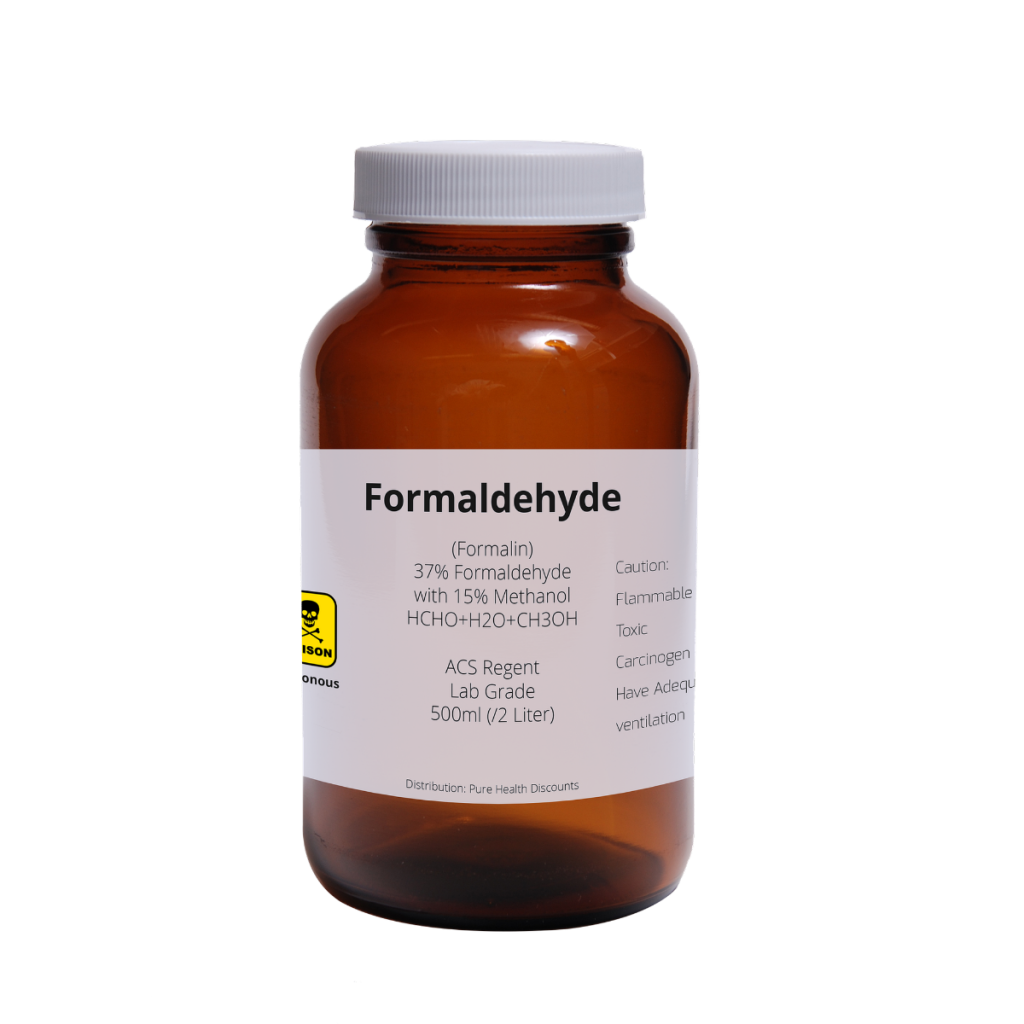Discover everything you need to know about formaldehyde in this comprehensive guide. Learn about its uses, potential health risks, and how to minimize exposure.
Everything You Should Know About Formaldehyde: A Comprehensive Guide
In this comprehensive guide, we will explore all things formaldehyde! So put on your lab coat, grab your safety goggles, and get ready for a deep dive into this fascinating chemical. From its properties to its uses, from health risks to environmental impact, and from debunking myths to understanding regulations, we’ve got it all covered. So let’s jump right in and unravel the mystery of formaldehyde!

Understanding Formaldehyde: What You Need to Know
Welcome to the fascinating world of formaldehyde! Today, we will delve deeper into this colorless gas with a pungent smell and explore its intriguing properties and versatile applications. Brace yourself for a journey filled with scientific wonders!
Exploring the Properties of Formaldehyde
Formaldehyde, with its unique characteristics, is truly a chemical marvel. Not only is it highly soluble in water, but it also possesses a low boiling point, making it a volatile substance. Its ability to transform and adapt to various conditions is nothing short of remarkable.
But what makes formaldehyde truly captivating is its chameleon-like nature. Just like a shape-shifter, it effortlessly changes its form to suit different applications. Whether it’s in a gaseous state or dissolved in water, formaldehyde is always ready to take on new challenges.
The Uses of Formaldehyde in Various Industries
Prepare to be amazed as we uncover the extensive range of industries that rely on the incredible versatility of formaldehyde. Let’s start with the wood industry, where formaldehyde plays a crucial role in strengthening and preserving wood products. Thanks to formaldehyde, wooden furniture and structures have enhanced durability and longevity.
But the wonders of formaldehyde don’t stop there. In the textile industry, this remarkable chemical is used to create wrinkle-free fabrics. Imagine never having to worry about ironing your clothes again! Formaldehyde’s unique properties make it an ideal candidate for ensuring our garments remain crease-free and always ready to wear.
Now, let’s shift our focus to the healthcare industry, where formaldehyde serves as a true lifesaver. As a disinfectant and preservative for medical specimens, it plays a vital role in preserving tissue samples, ensuring accurate diagnoses, and advancing medical research. Without formaldehyde, the progress of modern medicine would be severely hindered.
These are just a few examples of formaldehyde’s incredible versatility. From plastics and resins to cosmetics and agriculture, its applications are seemingly endless. Formaldehyde is a true multi-talented superstar, making our lives easier, safer, and more convenient.
As we conclude this exploration into the world of formaldehyde, we hope you’ve gained a deeper understanding and appreciation for this remarkable chemical. Its properties and applications continue to shape numerous industries, making it an indispensable component of our modern world.
Unveiling the Concerns Surrounding Formaldehyde
Welcome, dear readers, to a deep dive into the world of formaldehyde. In this article, we will explore not only the potential health risks associated with formaldehyde exposure but also the impact it has on our environment. So, grab a cup of tea, sit back, and let’s delve into this fascinating topic.
Health Risks Associated with Formaldehyde Exposure
When it comes to formaldehyde, we cannot turn a blind eye to the potential health risks it poses. Prolonged exposure to this chemical can have detrimental effects on our well-being. It can cause irritation to the eyes, nose, and throat, leaving us feeling uncomfortable and frustrated. Moreover, respiratory problems can arise, making it difficult to breathe freely.
But fret not, dear readers, for there are ways to protect ourselves from the harmful effects of formaldehyde. By taking proper precautions and limiting our exposure, we can keep this chemical from wreaking havoc on our health. Ensuring proper ventilation, using protective equipment, and following safety guidelines are just a few measures we can take to safeguard ourselves. Remember, safety first, folks!
Environmental Impact of Formaldehyde
Now, let’s shift our focus to the impact formaldehyde has on our beloved environment. It is no secret that various industrial processes release formaldehyde into the air and water, contributing to pollution. This pollution, in turn, can have detrimental effects on ecosystems and biodiversity.
However, there is hope on the horizon! With advancements in technology and stricter regulations, we are finding better ways to minimize the environmental impact of formaldehyde. Scientists and researchers are tirelessly working to develop innovative solutions that reduce the release of this chemical into our environment. By implementing these solutions and embracing sustainable practices, we can give Mother Nature the tender loving care she deserves.
So, dear readers, let us join hands in our collective efforts to combat the environmental impact of formaldehyde. Through awareness, education, and proactive measures, we can create a cleaner and healthier world for ourselves and future generations.
Debunking the Myths: Is Formaldehyde Safe?

The Truth About Formaldehyde and Human Health
Time to bust some myths! Formaldehyde has gotten a bad rap, but let’s set the record straight. In low levels, formaldehyde is generally safe. It’s the prolonged, high-level exposure that raises concerns. So unless you’re spending your days swimming in a formaldehyde pool, you’re probably going to be just fine.
But what exactly is formaldehyde? This colorless gas with a pungent odor is a naturally occurring substance found in the environment. It is also produced as a byproduct of combustion processes and is used in various industries, including manufacturing, healthcare, and construction.
Formaldehyde has many practical applications, such as being used as a disinfectant, preservative, and even as an ingredient in certain beauty products. Its versatility and effectiveness make it a valuable chemical in numerous fields.
Formaldehyde Regulations and Safety Measures
Rest easy, dear reader, because formaldehyde isn’t running wild without any rules. There are regulations in place to keep you protected. From workplace exposure limits to product labeling requirements, authorities are actively working to ensure your safety. So next time you see a formaldehyde-containing product, check for that trusty safety label, and breathe a sigh of relief.
When it comes to occupational exposure, organizations such as the Occupational Safety and Health Administration (OSHA) have set limits on the amount of formaldehyde that workers can be exposed to. These limits are based on extensive research and aim to prevent any adverse health effects caused by prolonged exposure to high levels of formaldehyde.
Furthermore, formaldehyde-containing products, such as furniture or building materials, often undergo rigorous testing and certification processes to ensure they meet safety standards. This includes testing for formaldehyde emissions and compliance with established guidelines. So, when you purchase a product, you can have peace of mind knowing that it has undergone thorough scrutiny to protect your well-being.
And there you have it, folks! A comprehensive guide to formaldehyde. We’ve covered it all – properties, uses, concerns, myths, and regulations. Formaldehyde is a complex chemical, but armed with knowledge, you can navigate its world with confidence. So go forth, educated reader, and spread the word about formaldehyde far and wide. Knowledge is power!
Remember, it’s always important to stay informed about the substances we encounter in our daily lives. By understanding the facts and dispelling the myths, we can make informed decisions that promote our health and well-being. So the next time someone brings up formaldehyde, you’ll be armed with the truth.






[…] address this issue and restore the health and vitality of your hair. In this article, we will guide you through everything you need to know about split ends, the role of shampoo in hair care, and the top clarifying shampoos available in […]